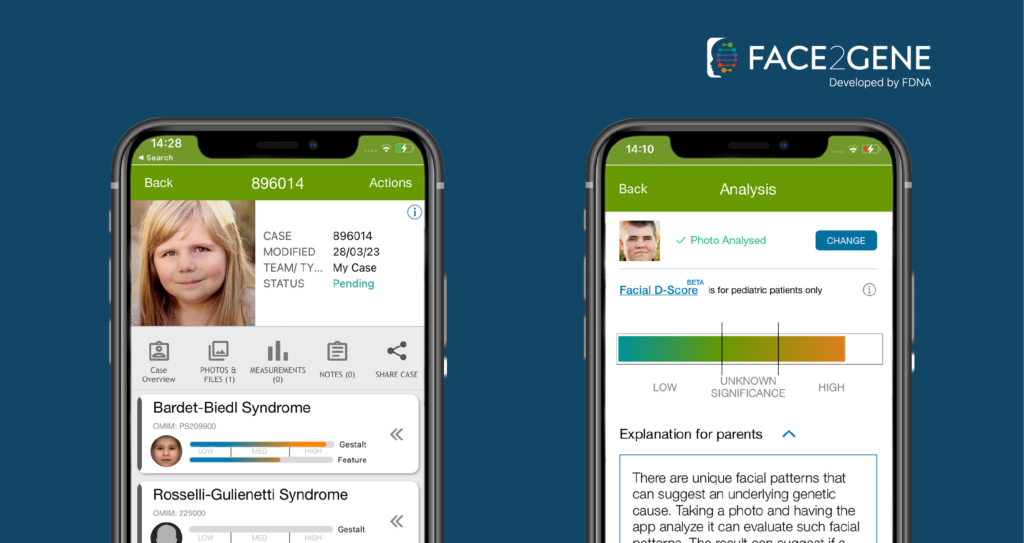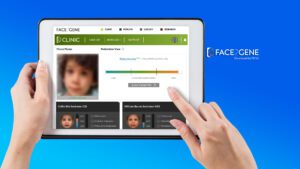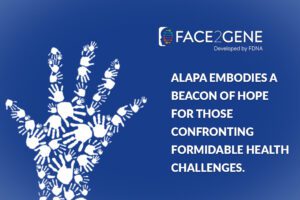Lauren’s birth was déjà vu for her parents. She had extra fingers, the same as her 7-year older brother Tyler when he was born. This made them think that they might have a genetic condition since they also shared similar symptoms, such as developmental delay. It would take 3 more years for them to be clinically diagnosed with Bardet Biedl Syndrome.
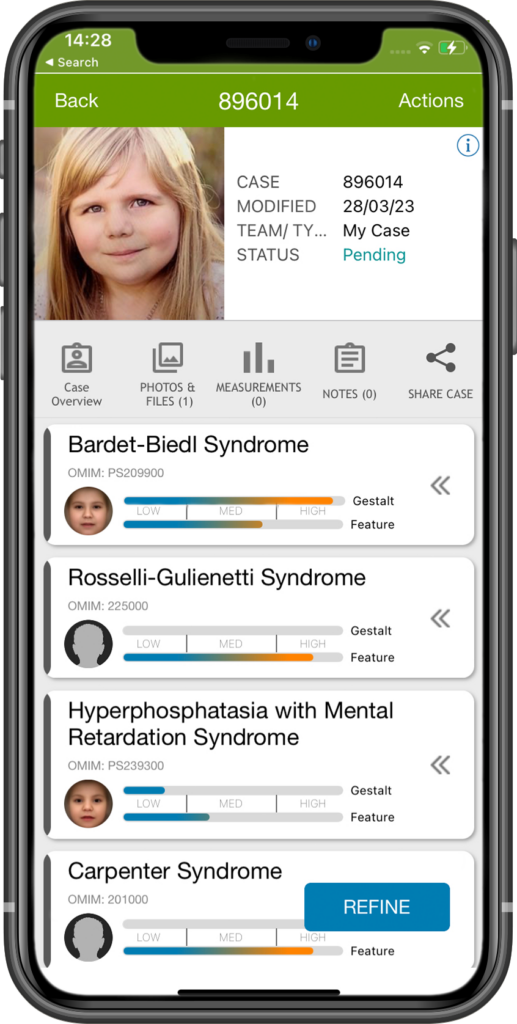
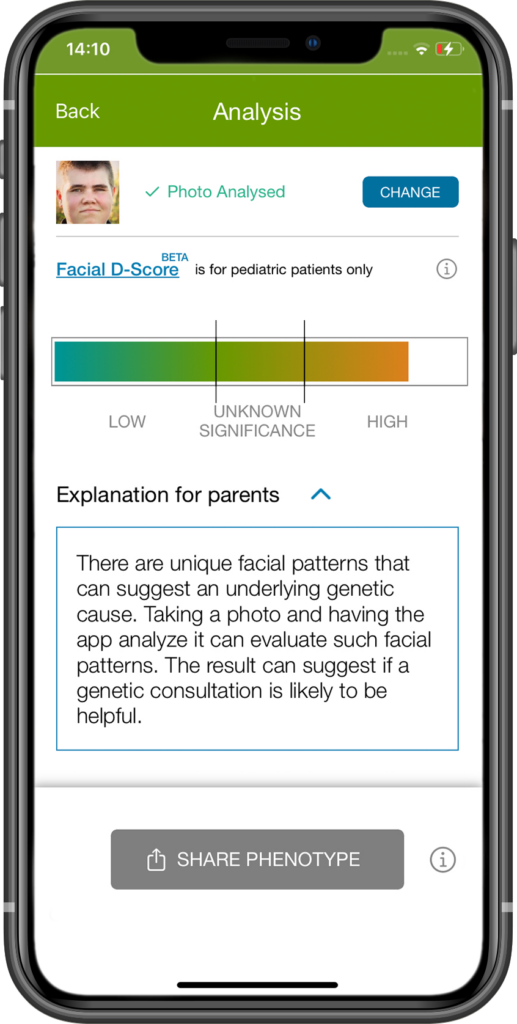
Lauren’s portrait indicated a high match with BBS, and Tyler also had BBS as his top feature and a high Facial D-Score On the Pediatrician View. Find more about The Pediatrician View.
Seven years earlier, two months after Tyler’s birth, his parents were referred to the genetics department at Primary Children’s Hospital in Salt Lake City, Utah. Not only was he born with extra toes and fingers, but he also didn’t have a pectoral muscle on one side of his chest and had one pupil that was always smaller than the other.
“We learned that the chest issue is called Poland’s Anomaly and the pupil problem is called Anisocoria but the doctors determined that the fingers, chest, and eyes were unrelated and no further testing was done,” said their mother, Amy.
Tyler underwent surgery at four months of age to remove his extra fingers and toes. As he grew, his parents saw that he was emotionally immature and he was overweight. In addition, his motor skills weren’t developing as quickly as other children his age. By the time Tyler turned 4 years old, his parents knew he was “different,” but his doctors didn’t see any reason to be concerned. It wasn’t until he started pre-school that they became alarmed.
“As soon as we started him in Kindergarten, we knew there was something wrong. He was struggling socially, and he had a very hard time following directions and doing the work at school. We could see a big difference between him and his peers,” Amy said.
They brought these concerns to Tyler’s doctors, and at age 5, Tyler was diagnosed with High Functioning Autism. His parents had a diagnosis but they didn’t think it explained all of Tyler’s symptoms.
“It was a trying time as we went through all kinds of testing to determine what was going on with Tyler but it was also a relief to know that someone besides us could see that Tyler needed some extra help. Although the diagnosis of High Functioning Autism was helpful, we still felt like there was more going on with him,” Amy said. When Lauren was born, they knew they had to keep digging hard for a definitive diagnosis.
Two years after Lauren was born, Amy heard about another child who had been born with an extra toe. This child had Bardet Biedl Syndrome. Amy read more about BBS and realized that many of the features of BBS fit Tyler and Lauren as well.
“Because this child had been born with an extra toe I felt a connection with her story and began researching about it. I was shocked when I read through the syndrome markers and recognized so many things that matched up with Tyler and Lauren,” Amy said.
In 2011, when Tyler was 10 and Lauren was 3, they participated in a BBS study with the National Institutes of Health, and the children were clinically diagnosed with BBS. The definitive answer would come much later in 2014, when genetic testing confirmed the diagnosis.
Amy and her husband learned all they could about Bardet Biedl Syndrome and became involved with the Bardet Biedl Syndrome Family Association, run by the Bardet Biedl Syndrome Foundation. Being able to connect with other parents and patients affected by the same rare disorder provided a strong support system for the family and a way to advocate for advancements.
Developing treatments and eventually curing BBS relies on continued research, advocacy, and leveraging new technologies. Early diagnosis is a critical first step in accelerating advancements for patients with these conditions. FDNA developed Face2Gene to aid in the diagnostic process. Lauren’s portrait indicated a high match with BBS, and Tyler also had BBS as his top feature and a high Facial D-Score on the Pediatrician View. Find more about The Pediatrician View.
“My hope for the future is that no families have to wait as long as we did for a diagnosis. It would also help families get treatment at an earlier age for their children, which can make a big difference in the future of that child,” Amy said.
Help Accelerate Advancements for Patients with Bardet Biedl Syndrome
Families and Patients: Ask your doctor to add your or your child’s case to Face2Gene. The personal information will only be accessible to your doctor, but the de-identified data may help others battling a rare disease. Find detailed information about Face2Gene’s features and technology
Healthcare Professionals: Do you have cases to upload that can help Face2Gene recognize eye disorders and accelerate advancements? Upload them through the app or at Face2Gene.com.
About the Bardet Biedl Syndrome Foundation
The Bardet Biedl Syndrome Foundation is a nonprofit association dedicated to improving the lives of individuals and families affected by BBS. The mission is to provide a support community for individuals and families, information about BBS; and promote science and research to improve the lives of individuals with BBS. They established the Bardet Biedl Syndrome Family Association and work in conjunction with the Center of Excellence for Treatment of BBS at the Marshfield Clinic and with CRIBBS, the Clinical Registry Investigating Bardet Biedl Syndrome. BBSF provides a family conference every other year to bring research information to families living with Bardet Biedl Syndrome and to provide practical advice and family connections for those raising children with BBS. Visit http://www.bardetbiedl.org/ for more information.
